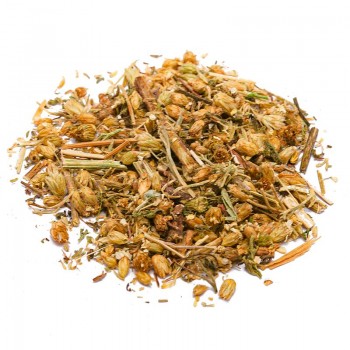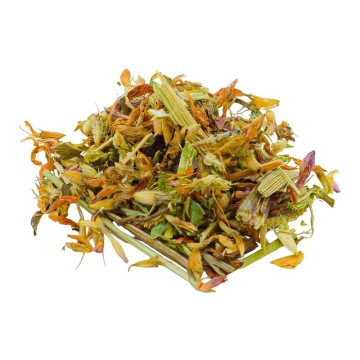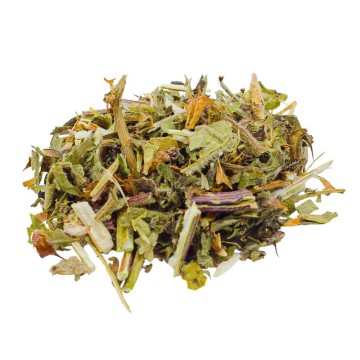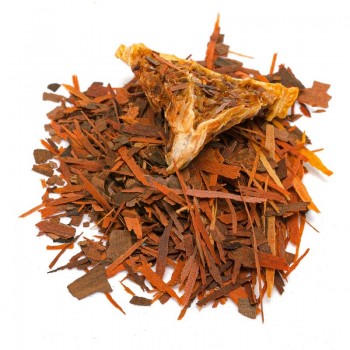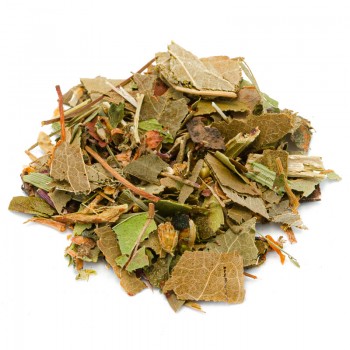This plant is now used as food and for medicinal purposes all over the world, indicated by researchers for its many health benefits. It is very rich in antioxidants and plant compounds, which give draining and detoxing properties , as well as natural anti-inflammatory and as a support to metabolism.
Moringa leaves: properties and benefits
The infusion of moringa leaves is historically appreciated for its diuretic and detoxifying qualities. The infusion of the powder, instant but healthy, can create a tea useful to protect our body against the accumulation of metals and toxic substances.
Moringa leaves, rich in vitamin C, provide useful elements in detoxification. Cleansing the blood by filtering toxins acts in the liver but also through various organs. Vitamin C helps the body to produce glutathione , a compound in the liver that promotes the elimination of metabolic waste. In its diuretic and light purgative action, fats and impurities will be expelled from the body in a natural way - helping with regular bowel movement and diuresis. In ongoing research, the leaves and flowers of moringa oleifera are being studied for their ability to protect the liver from damage caused by toxic substances. They can accelerate its repair process through an action on enzymes, thanks to the polyphenols contained. Furthermore, moringa is a plant known for its natural anti-inflammatory characteristics, useful for fighting rheumatism.
Inflammation, as the body's natural response to infection or injury, can become chronic in some cases, and damage our tissues. For this, it is important to evaluate herbs or spices with properties that help reduce inflammation in the body. Depending on the substances contained, the possible herbal support varies. We know that for moringa oleifera, the leaves contain isothiocyanates, compounds that favor the fight against inflammation and oxidative stress. Other elements of moringa leaves are also studied as natural compounds, useful for soothing the conditions of irritation and swelling in arthritis.
Several antioxidant plant compounds are present in the leaves of Moringa oleifera, including vitamin C and beta-carotene. It is a plant which is being researched for various biological activities, both as an agent to reduce cholesterol and blood sugar, and for the regulation of the state of thyroid hormones, and for its hypotensive properties. It makes quercetin available, in fact, a powerful antioxidant that can help lower blood pressure.
The properties to help the body regulate blood sugar levels could occur through the good percentages of chlorogenic acid contained. The content of vitamin B12 supports the metabolism of lipids and carbohydrates, and for this reason it is appreciated as a supplement in the case of a slimming diet. Furthermore, its purifying qualities favor actions of contrast to cellulite and swelling of water retention . The vitamins and minerals contained also support physical activity avoiding muscle fatigue and tiredness: moringa powder is a useful energy source for those who want to keep fit.
Origins and History of cultivation
Moringa is a tree native to northern India (sub-Himalayan mountainous region), where it has been known for at least 5,000 years. Its considerable size quickly made this known, and it has been successful over the centuries, as almost all of its parts are used or cooked. Moringa oleifera has been used as an ingredient in traditional Indian and African medicines, especially the leaves and pods. They are considered healing herbs in Ayurvedic and unani (Middle Eastern) medicine. Over time it has also been known by Egyptians and Romans as a purgative and to aid digestion. On a culinary level, the edible leaves are cooked, and the roots transformed into a spicy condiment.
Parts of the plant are mainly used among populations where many vitamins, proteins and minerals are not available, as a source for some essential nutrients in a proper diet. For thousands of years the moringa leaf has been a source of nutrition, while the wood provided building material. Other names for this plant include drumstick tree, muringa (Tamil), jacinto (Spanish), sahijan or munaga (Hindi), and shigru (Ayurvedic).
The Moringa, in fact, has been introduced over time in Asia, Africa and Madagascar, in the Philippines and in the United States. The powdered leaves of moringa are commercially available as food supplements, and are the richest part of vitamins and minerals.
Plant and flowers
Moringa oleifera is a fast growing tree of the Moringaceae family. It is the only genus that contains 13 species, one of which is M. stenopetala, native and cultivated in Africa. The name comes from the Tamil Indian language, where the word murungai means twisted pod. The name oleifera derives from the Latin term oily, due to the high oil content of the seeds.
The tree resists drought, and for this reason it is found widespread in tropical and equatorial areas, growing in height up to about 10-12 meters. It shows a whitish-gray bark, surrounded by cork, and falling brittle branches. The leaves branch out into a large, feathery canopy, while the flowers are yellowish-white, fragrant and grow in clusters. Flowering begins within the first 6 months of planting, usually in late spring, while the fruit appears as a capsule with brown seeds.
Nutritional values of moringa oleifera - leaves
The powdered leaves contain essential amino acids, antioxidants, carotenoids and substances with various nutraceutical properties - such as vitamins and minerals. They are exceptionally rich in iron, protein, vitamin C, vitamin B6, riboflavin . In addition, the plant abounds in nutrients with a high content of polyphenols, including phenolic acids, flavonoids and glucosinolates. They are an excellent source of substances that can help reduce inflammation. Another major benefit of moringa leaves is their antioxidant content; the main ones include quercetin and chlorogenic acid.
How to use the moringa leaves in powder form to prepare an herbal tea
The infusion of moringa is obtained by putting in a cup (250 ml), about 3-5 grams of powdered leaves, with water at 100 ° C. Leave to infuse for 5 to 8 minutes, before drinking the herbal tea.
Add honey or sugar if you wish.
Moringa oleifera: side effects and contraindications
Moringa leaves are generally recognized as safe. If taken in excess, they can still cause side effects such as nausea, vomiting, diarrhea, rash, hypotension. In any case, the moringa tea should be consumed in the recommended doses. Medicinal herb may interact with certain medications for diabetes, high cholesterol, and blood pressure disorders. It is good to consult a specialist in the case of chronic diseases. Moringa tea is not recommended for children, pregnant and breastfeeding women.

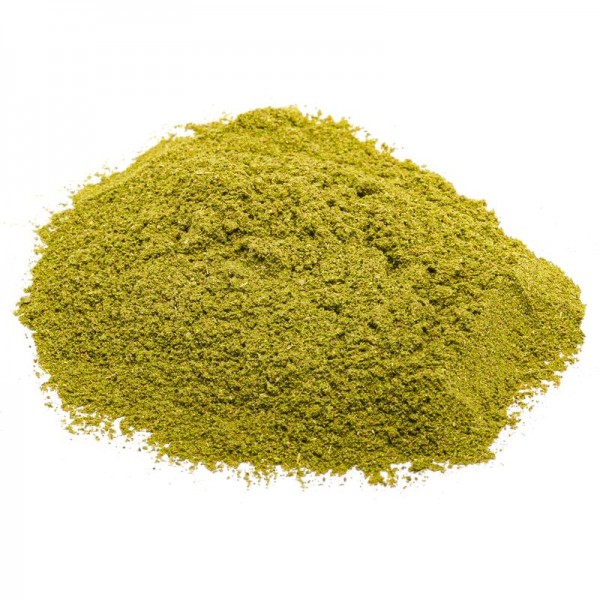









 No reward points for this product.
No reward points for this product.



